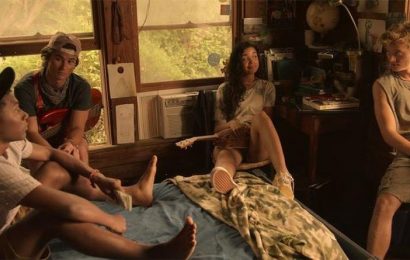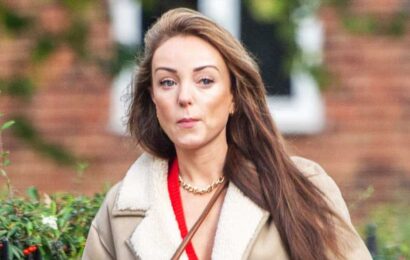Despite the luxurious big house and wide-open ranges that make up the setting in “The Power of the Dog,” no one on the Burbank family ranch is ever exactly comfortable. Rose Gordon (Kirsten Dunst) is outwardly the most tormented, unnerved to the point of alcoholism by the looming menace of her new brother-in-law Phil Burbank (Benedict Cumberbatch). Her painfully awkward son Peter (Kodi Smit-McPhee) all but flinches every time he enters a new space, and even the mild-mannered George (Jesse Plemmons) is at odds with the landscape they all call home. A feeling of discomfort wafts through the air of the film like a disease, in no small part because of the choices made by production designer Grant Major to create spaces that both fit the film’s Montana ethos and subtly reflect the characters’ unease in a house that offers the family no relief from themselves.
“The house, as per the book, has its roots in a sort of East Coast aesthetic,” Major told IndieWire. “So we chose this early Craftsman style that is actually quite artistic in many ways… the 40 years since it was built has really weathered it and pared back [the house], but it still has the bones of quite a fancy house. And in a way, it’s kind of synonymous with Phil [because] it’s almost like time stopped.”
Just as Phil refuses to bathe or change out of his overalls, denying the mores of the sophisticated, Eastern upper set of his family, the big house stands against a mountain range, not in a state of disrepair but defiantly unimproved. Major said he emptied out and darkened the interior — the Burbank parents taking a quantity of furniture with them when they moved back East — and the result is that the viewer can see the hollowness that afflicts Phil, and that threatens to consume Rose when she moves in after marrying George. “It’s very sort of echoey,” Major said. “It’s almost like the emotion and the love has been taken out of that house along with the parents.”
The interior of the Burbank house in “The Power of the Dog”
Screenshot/Netflix
Where there would be artistic flourishes and lush detailing, Major was sure to make those touches heavy and opulent to the point where they become almost uncomfortable. Of Rose’s room, he said, “It’s not a very restful room. It’s very busy with these big, heavy furniture pieces. So even though she can close herself in there, I don’t think it’s a total sanctuary for her.” Windows would normally offer an escape, or at least a view to a world outside, and Major deliberately built big windows to let in the Montana skyline (actually the stunning Hawkdun range in New Zealand’s South Island). But it has the opposite effect from the sense of space and possibility a Western landscape usually offers. ‘[Rose is] like a bird in a cage in some ways. Escape is out there. She could go, but she’s also trapped. It’s such a big landscape that you can’t get out of there.”
Major worked alongside director Jane Campion and cinematographer Ari Wegner to preserve that sense of imposing space in the layout of both the exteriors and interior stages. “[We] studied intensely the positioning of all these buildings, so that the geography, the lines of sight, and the connectivity between the barn and the house, the house and the tennis court, the barn and the farm workers’ house,” Major said. “So we got all these eye-lines out of windows and doorways and, you know, it’s the spaces between buildings that frame the landscape. So [we tried our best] to get the very best out of our landscape by getting sightlines off to the ranges and off to grasslands and all that sort of stuff.”
The master bedroom in “The Power of the Dog”
Screenshot/Netflix
“The insides and the outsides are the same place in our story,” Major said, and the film deliberately upends Western signifiers with a wide outside world that offers no relief and a richly detailed mansion world that’s actually cold, big-boned, and hollowed-out. But this strategy arises not out of a desire to subvert a genre but out of an acute understanding of characters who live at a hinge point in history where the door on the wild west is slamming shut. “[Getting the time period right], the place right, great,” Major said. “But catering things in particular to a dramatic instance and the deepest psychological interactions between [Phil and Rose] is the prime focus of a production designer for me.” The Burbank house didn’t need to look the way it does in “The Power of the Dog.” It looks the way that Phil feels.
Source: Read Full Article











